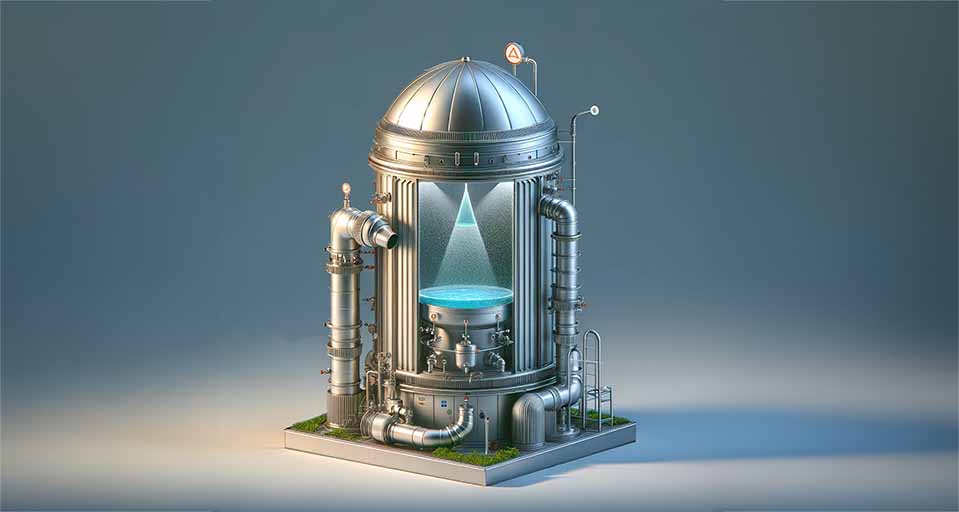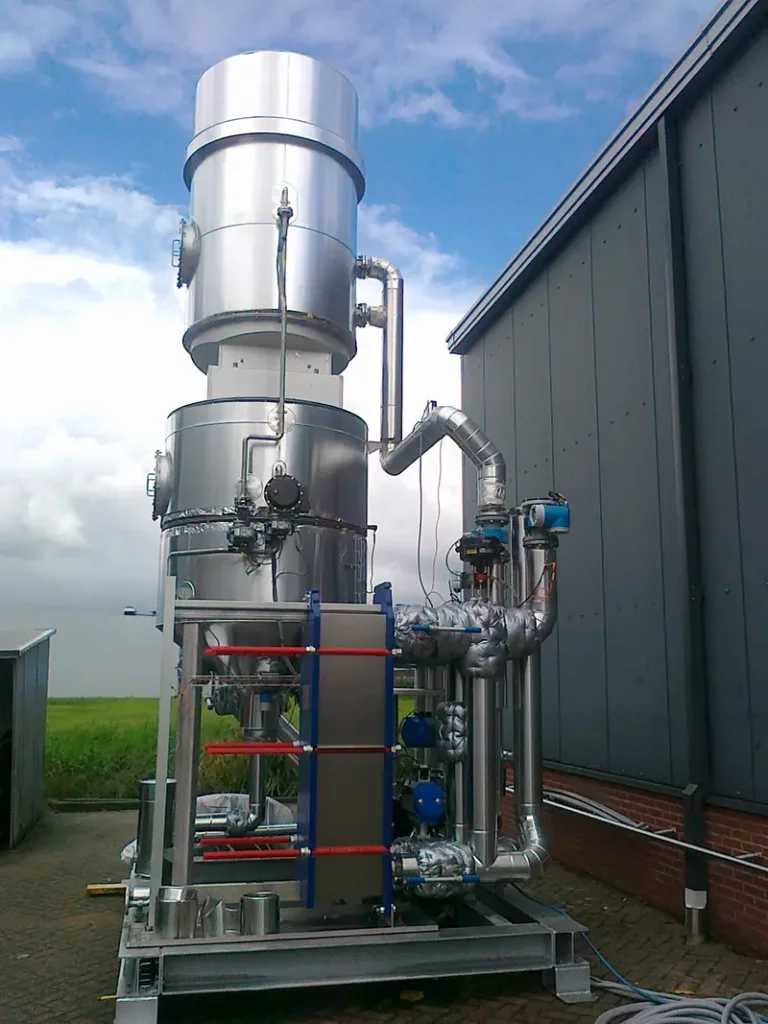Within the field of industrial emissions management, dry scrubbing systems emerge as key technological solutions, tackling environmental challenges with a novel strategy. This blog explores the workings of dry scrubbing, contrasts it with wet scrubbing techniques, examines the pollutants it can remove, and discusses its benefits and drawbacks. It provides a detailed insight for anyone contemplating the adoption of this technology.
Want to know more about wet scrubbing? Read more here: https://joaairsolutions.com/blog/how-does-a-wet-scrubber-work/
Table of Contents
How Does Dry Scrubbing Work?
The basic operations of a dry scrubber involve a few key steps designed to remove pollutants from gas streams without the use of liquids. Here’s an overview of how they work:
- Polluted Gas Intake: The process begins with the intake of the polluted gas stream into the dry scrubber system. This gas typically contains various pollutants, including particulate matter, acid gases, and possibly volatile organic compounds (VOCs).
- Gas Cooling (optional): The hot gas stream is potentially cooled before sorbent introduction to optimize scrubbing. Cooling ensures the sorbent’s thermal stability, boosts reaction efficiency with pollutants, and safeguards equipment. The gas may pass through a heat exchanger or undergo other cooling techniques to reach a suitable temperature for effective scrubbing.
- Sorbent Injection: A key component of the dry scrubbing process is the injection of a sorbent material into the gas stream. Sorbents are substances that have the capacity to adsorb or react chemically with the pollutants in the gas. Common sorbents include lime (calcium hydroxide), sodium bicarbonate, and activated carbon, each chosen based on the specific pollutants targeted for removal.
- Reaction Chamber: As the polluted gas mixes with the sorbent particles, the pollutants either adhere to the surface of the sorbent (adsorption) or undergo a chemical reaction to form a different, less harmful compound. This step is critical for the effective removal of acid gases like sulfur dioxide (SO2) and hydrogen chloride (HCl), as well as for capturing heavy metals and some VOCs.
- Particulate Collection: Following the reaction or adsorption phase, the gas stream, now containing the sorbent particles with the captured pollutants, passes through a particulate control device. This is often a fabric filter or an electrostatic precipitator designed to capture the solid particles, effectively removing them from the gas stream.
- Waste Handling: The collected waste, consisting of the used sorbent and captured pollutants, is then handled according to waste management practices. This could involve safe disposal or further processing, depending on the nature of the waste and regulatory requirements.
- Clean Gas Release: The cleaned gas, now significantly free of the original pollutants, is released into the atmosphere or directed towards further processing steps, depending on the specific industrial setup and environmental regulations.

Dry scrubbers are favored in situations where liquid waste disposal is a concern, where water resources are limited, or when the pollutants can be effectively managed with dry methods. They offer a versatile and often cost-effective solution for controlling emissions from various industrial processes.
Wet vs. Dry Scrubbers: A Comparative Insight
When compared side by side with wet scrubbers, dry scrubbers can be beneficial in certain applications. While wet scrubbers utilize a liquid medium, typically water or a chemical solution, to remove pollutants. Dry scrubbers offer a water-free alternative, circumventing the need for complex water treatment systems. The choice between wet and dry scrubbing is determined by specific process requirements, waste disposal preferences, and the nature of the hazardous material being managed. Each method has its strengths, with dry scrubbing excelling in situations where water availability is a concern or when managing dry scrubber waste is preferable to handling liquid waste streams.
Wet scrubbers
Discover how wet scrubbers can efficiently reduce your site’s pollution, ensuring regulatory compliance and promoting a cleaner, safer environmental footprint.
The Targeted Contaminants of Dry Scrubbers
Dry scrubbers are highly proficient at removing a wide array of pollutants, particularly acid gases such as:
- Hydrochloric Acid (HCl)
- Hydrogen Fluoride (HF)
- Chlorine Gas (Cl2)
Dry scrubbers are especially beneficial in industries where acid gas emissions are common. By using a variety of sorbents, dry scrubbing systems can be tailored to capture specific contaminants. This offers a versatile solution for industrial emission control and ensuring compliance with stringent environmental regulations.
The Pros and Cons of Dry Scrubbing
Pros:
- No water requirement: Eliminates the need for water treatment and handling, making it suitable for areas with water scarcity.
- Waste management: Produces a dry waste product, simplifying waste disposal processes and avoiding the creation of potentially contaminated wastewater.
- Versatility: Can be adapted to target a wide range of pollutants by selecting appropriate sorbent materials.
Cons:
- Limited effectiveness for certain pollutants: May not be as effective as wet scrubbers in removing some types of contaminants, such as very fine particulates or certain VOCs.
- Sorbent costs: The need for regular replenishment of sorbent materials adds to the operating costs.
- Maintenance: Handling and disposal of dry scrubber waste require careful management to avoid secondary environmental impacts.
Do I need a dry scrubber?
Considering the wide range of air pollution control options, you might wonder, “Is a dry scrubber suitable for my needs?” Choosing the correct scrubber is vital to complement your industrial processes effectively. At JOA, we rely on detailed analysis and data to recommend the scrubber that best fits your requirements.
Our pre-engineering assessments ensure that the solution we propose is not just a generic option but a tailored fit for your operation, promising enhanced efficiency and sustainability.
Partnering with JOA Air Solutions means getting a tailor-made solution for your air pollution challenges, designed for durability and effectiveness. Let us tackle your air quality issues with a solution crafted specifically for your site. Reach out to us and see how we can make a difference.


